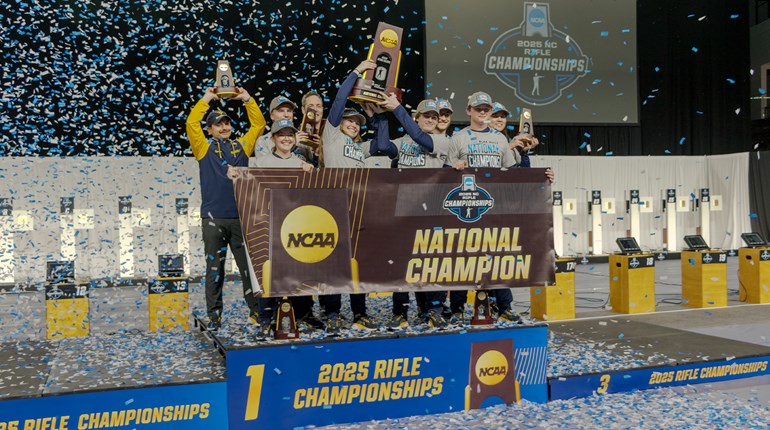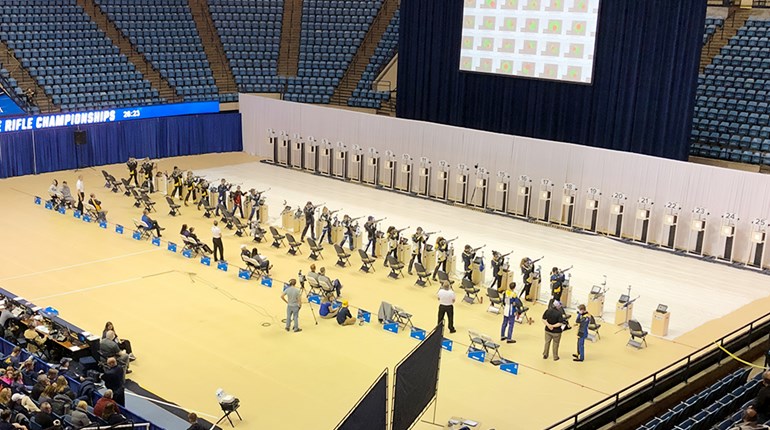
Part I is here.
What equipment will I need?
The answer to this question lies in another question: What sport or type of shooting do you intend to pursue? If you want to begin with “plinking” (having fun) in your backyard or your basement airgun range, a $50 BB gun from a reputable manufacturer will work well out to about 15 feet. You’ll need a pair of safety glasses and a safe target (we’ll discuss this in more detail later). For better accuracy or competition, you’ll want a pellet gun since they use a rifled barrel. Rifling spins the pellet like a football so it shoots straight over a longer distance than a BB. A BB gun’s smooth bore (no rifling) doesn’t spin the BB. After about 15 feet, the BB tends to float, just like a knuckle ball pitch. For competition, you’ll want better sights and a good sling. For high-end (precision) events, the canvas and leather shooting jackets, pants, gloves and boots are designed to help stabilize your position. A spotting scope will help you see where your pellets are striking the target. A shooting mat will provide a comfortable place to shoot the prone position.
But don’t run off to the shooting store just yet. There are rules about what equipment you’re allowed to use during competition. Depending on the sport you choose, your great-looking shooting jacket may or may not be allowed (some may require adjustable straps instead of buttons, and so on); the good-looking shoulder hook on the buttplate of your air rifle will disqualify you from a sporter event; and those high-top boots that help you stand still may be illegal. Depending on the event, even the size of “blinders” for your glasses is regulated. I recommend that you find and attend a local tournament before buying anything. You’ll learn a lot, probably have some fun, and you will definitely save some money by avoiding unnecessary purchases.
Which Rifle? Which Sport?
Check with your coach or club before buying a rifle. They may already have “club” guns that you may use for free. The two general categories of airguns are 1) Pneumatic or Spring-Piston; and 2) Pre-charged gas. The first category includes guns that you hand-pump to produce the pressure needed to fire the gun. These are simple to operate and less expensive. Note, however, that pumping your rifle each time you shoot increases your heart rate, which affects how steadily you can aim the gun during competition. If you think you want to compete, the “pump” gun may be a handicap if your fellow competitors don’t have to pump their rifles after each shot. Pumping also takes you out of position for prone, kneeling or sitting and you may become tired after pumping the gun 60 times in a match. If you’re doing this for fun, however, don’t spend too much time worrying about the competitive aspect right now.
The second category—pre-charged gas—allows you to refill your rifle’s air reservoir by connecting it to an air or CO2 tank. Once you get a refill (which is like pumping up a car tire at the gas station), you’re good for many shots before you’ll need another trip to the tank. If you can make friends at a local dive shop or fire station, perhaps you can start out by taking your pre-charged air rifle and adaptor to them for a refill every couple of months, rather than buying your own tank. Otherwise, the cost of your own “pre-charged gear,” (tank and adaptor) will run about $250. It will also cost about $20 to refill the SCUBA tank once or twice a year, plus you’ll need an inspection of the tank every five years.
The Daisy 853CM-Avanti sporter model was co-developed with the Marine Corps Junior Reserve Officer Training Corps (JROTC) for their high school air rifle program. It is an excellent example of a single-stroke pneumatic (SSP) model that never needs a replacement air cylinder or expensive SCUBA tank for a refill. This rifle qualifies for the entry level “Sporter” category for 10-meter (32.8 feet) competition and will last a long time on a budget. It has an accurate Walther rifled barrel, adjustable buttplate, right-hand bolt and excellent sights. Like other companies, Daisy has several other models, including the Avanti Medallist model 888 and Gold Medallist model 887. They both offer refillable CO2 systems, as seen in most matches. CO2-refillable guns have all of the same advantages of the pre-charged air guns but you don't have to own a tank.
The Crosman Challenger is also a “Sporter” class rifle, but uses a standard 12-gram CO2 cartridge so you do not have to pump the rifle each time you shoot or purchase an air (SCUBA) tank. Additional features that come with this rifle are a pistol grip and a trigger over-travel screw. This model has both an adjustable buttplate and cheekpiece to ensure that your head is vertical when shooting. This rifle also has an ambidextrous bolt.
The AirForce Edge model is yet another example of a “Sporter” class rile but uses an Olympic-style pre-charged air system, precision rear sight and Walther rifled barrel. AirForce has been using this design in their popular utility rifle systems for years. This model has been approved for 3-position competition (prone, kneeling and standing) but, at the time this article was written, is not yet in stores. The purchase price is expected to be under $600. (Image in PIX—please allow generous caption space)
The author’s precision Feinwerkbau model 601 is a blend of simple SSP technology and precision accuracy. This pump model fires as accurately and consistently as a pre-charged model, without the need for the SCUBA tank and adaptor. The heavier weight, better sights, adjustable trigger and increased accuracy put this gun into the precision class. Purchase pricing for a new gun is about $2,400, or $700 used.
Safety Tips
In addition to the NRA’s three gun safety rules (ALWAYS keep the gun pointed in a safe direction; ALWAYS keep your finger off the trigger until ready to shoot; ALWAYS keep the gun unloaded until ready to use), there are some unique rules for airguns that will be covered in your owner’s manual. Please also read the NRA’s Airgun Shooting Sports Safety Guide.
Dry-Firing: Firing the gun without a pellet or BB is called dry-firing, used when practicing your position and integrated shot-sequence. Some airguns are not designed to be dry-fired, as it could rupture their seals, so read the directions before firing and be sure to use a safe area.
Pumping: For pump guns, the owner’s manual will provide specific directions on the number of times you can pump the gun before firing. Over-pumping the gun not only risks breaking it, but the pellet or BB may penetrate the target backstop and injure you and others. A pellet can easily penetrate a ¼-inch plywood board.
Pre-charged Gas: SCUBA tanks are convenient but need to be handled with care. Proper storage is important to prevent the tank from falling over and breaking the nozzle, instantly releasing highly compressed air. For the same reason, stand to one side of the tank when refilling your gun. There are different size standards (European and American) for the yoke adaptor that connects to the tank. Using the wrong one could—you guessed it—ruin the connection or hurt you.
Target Backstops: Because BBs are made of steel, they require a different backstop than that used for a lead pellet. Use a backstop designed for your gun.
Cleaning: Unlike firearms that use primers, powder charges and higher velocity bullets, airguns have neoprene and rubber seals to compress and control the air. Using petroleum-based cleaners that are suitable for a firearm can ruin an airgun’s seals. Once again, you’ll need to read the cleaning directions for your air rifle so you don’t ruin it before firing the first shot. How often should you clean the gun? Subject to the directions that came with your airgun, you’ll probably only clean the bore once or twice a year since the velocity of the pellet is much lower than a firearm bullet, so there’s less lead residue in the bore.
Clear Bore Indicator (CBI): You should keep a piece of brightly colored weed eater line in the barrel with an end protruding from the breach and the muzzle, so that everyone can tell that it’s not loaded. Remove the CBI only when ready to fire—and keep it clean to avoid bringing dirt into the barrel.
If you’ve been with us for both Part I and Part II, you now know enough to find a team or a tournament and ask some intelligent questions based on your interests—plinking, sporter or precision. Whatever path you take, you’re going to have a lot of fun. You’ll be able to shoot your airgun more often than your friends who have to stand in line for their turn at the firearms range. And you’re going to be able to afford to shoot (i.e. practice) a lot more for less money. Be safe, and have fun.






































